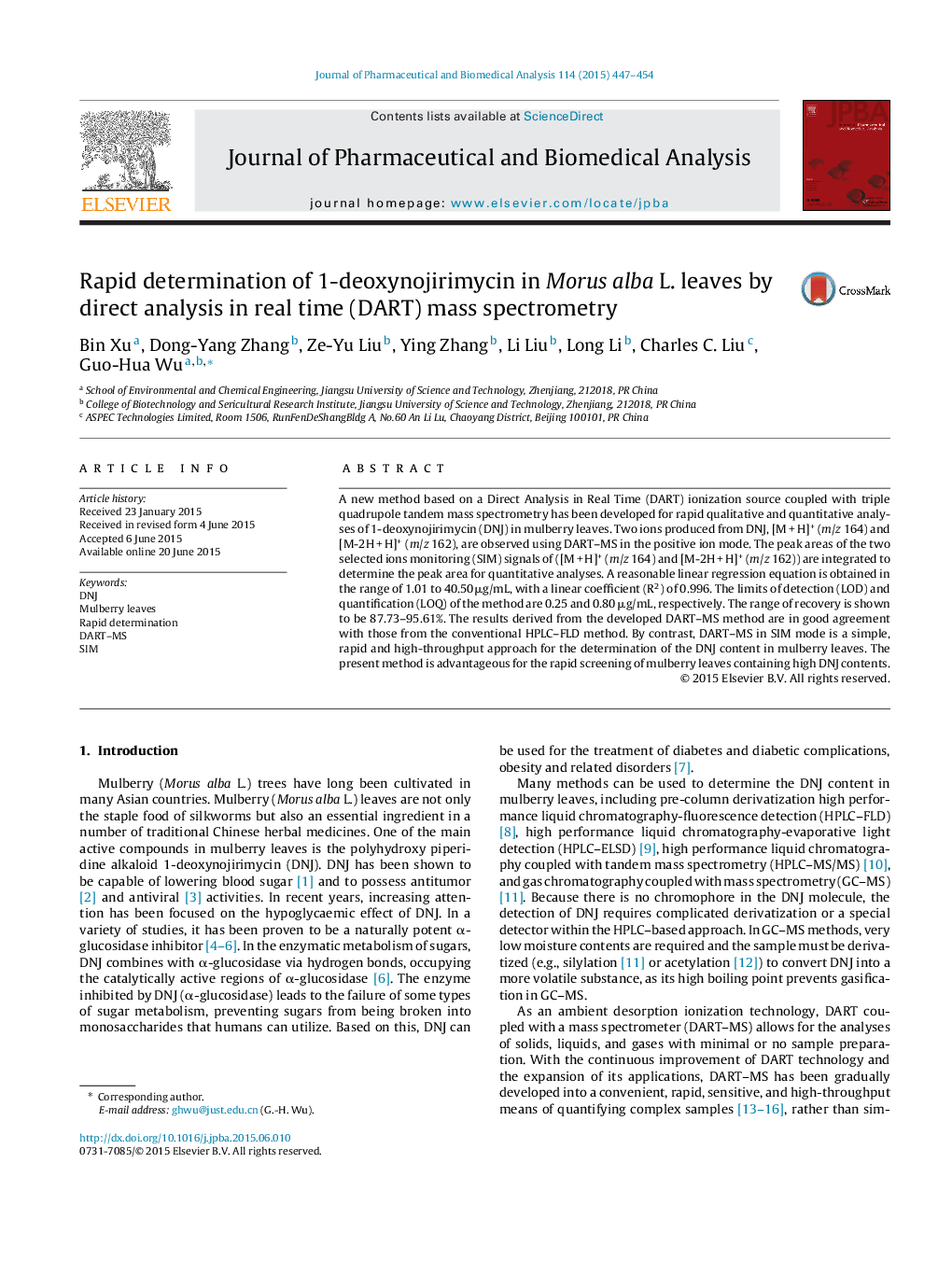| Article ID | Journal | Published Year | Pages | File Type |
|---|---|---|---|---|
| 1220813 | Journal of Pharmaceutical and Biomedical Analysis | 2015 | 8 Pages |
•A DART–MS method was developed to quantify DNJ in mulberry leaves.•A comparison between DART–MS and HPLC–FLD methods was studied.•The ions produced from mulberry leaves extracts were ascertained by DART–MS/MS.
A new method based on a Direct Analysis in Real Time (DART) ionization source coupled with triple quadrupole tandem mass spectrometry has been developed for rapid qualitative and quantitative analyses of 1-deoxynojirimycin (DNJ) in mulberry leaves. Two ions produced from DNJ, [M + H]+ (m/z 164) and [M-2H + H]+ (m/z 162), are observed using DART–MS in the positive ion mode. The peak areas of the two selected ions monitoring (SIM) signals of ([M + H]+ (m/z 164) and [M-2H + H]+ (m/z 162)) are integrated to determine the peak area for quantitative analyses. A reasonable linear regression equation is obtained in the range of 1.01 to 40.50μg/mL, with a linear coefficient (R2) of 0.996. The limits of detection (LOD) and quantification (LOQ) of the method are 0.25 and 0.80 μg/mL, respectively. The range of recovery is shown to be 87.73–95.61%. The results derived from the developed DART–MS method are in good agreement with those from the conventional HPLC–FLD method. By contrast, DART–MS in SIM mode is a simple, rapid and high-throughput approach for the determination of the DNJ content in mulberry leaves. The present method is advantageous for the rapid screening of mulberry leaves containing high DNJ contents.
Graphical abstractFigure optionsDownload full-size imageDownload as PowerPoint slide
